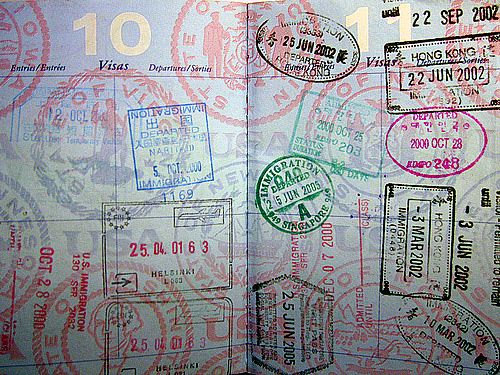[Note: This is a guest post by Steven W. Hook from Kent State University and is the second post on the Duck Forum on Teaching US Foreign Policy]
“Teaching U.S. Foreign Policy in an Age of Uncertainty,” by Steven W. Hook (Kent State University)
Students of U.S. foreign policy face a unique intellectual challenge: to understand state policy making at the intersection of domestic and global governance. Their instructors, who face the same task, need to integrate the two domains in their lectures and assignments. Along the way, they confront the added burdens of making some sense of the heightened turbulence of recent world politics while also grappling with paradigmatic shifts in the field of international relations that have led some scholars to declare “the end of IR theory.” Teaching U.S. foreign policy today is more complex, but also more compelling, than ever.
My approach to U.S. foreign policy is founded upon a normative claim that citizens should be informed and engaged in public affairs, especially global politics. The empirical record is clear, however, regarding the limited political knowledge held by most American adults. It is also known that political knowledge and efficacy erode as governance moves upward from local to state, national, and global realms of authority. Despite evidence that the downsides of the “knowledge gap” are mitigated by citizens’ use of heuristics and may be statistically negated by off-setting deficiencies in mass perceptions, nature still abhors a vacuum. The failure of most citizens to maintain more than a minimal grasp of foreign affairs presents temptations for policy makers to act recklessly, corruptly, or on the “dark side” of war powers, all with dreadful consequences.
These concerns regarding public knowledge relate directly to the theme of my textbook, U.S. Foreign Policy: The Paradox of World Power (2014, 4th ed. CQ Press). The book examines the institutional and societal forces that manifest the nation’s democratic freedoms while frequently contributing to incoherent and inconsistent government actions on the world stage. In short, the dynamic sources of U.S. foreign policy also expose vulnerabilities in America’s world power. The paradox offers a useful lens through which students can take stock of U.S. intelligence breakdowns, unpopularity in the Middle East, foot dragging on climate change, the stalemate with Cuba, and innumerable other foreign policy problems.
This conception of U.S. foreign policy is grounded in liberal theories of state agency rather than neo-realist theories that identify systematic forces as primary determinants of policy behavior. For decades, the sub-field of foreign policy analysis (FPA) has opened the “black box” of domestic politics, whose central assumptions include fragmented authority and the hegemony of civil society. The FPA research program also builds on constructivist theory to the extent that policy makers, as cognitive misers, rely on belief systems, analogies, and groupthink to devise a more orderly world order than actually exists.
I am determined to communicate with my students – in writing and in classroom – in a manner that sustains their passion for U.S. foreign policy. Today’s college students, overwhelmed with information and social media, depend on their professors to provide focus and perspective. While students are grateful when Power Point slides are presented and even distributed, they seem to me more excited by illuminating and provocative lectures that bring the “outside world” into relief. In this regard, I limit my classroom visuals to graphics (maps, figures, tables) in order to maintain eye contact with students and hold their attention.
I find that students are drawn to history lessons that shed further light on present-day dilemmas. When possible, I ask them to read my other textbook, American Foreign Policy since World War II (2013, 19th ed., CQ Press), which highlights the impact of American cultural values and self-images on the conduct of U.S. foreign policy. Students benefit by tracing the nation’s incessant geographic expansion in the 19th century, its emergence as a paramount world power by the mid-20th century, and its setbacks – many of them self-inflicted – that have threatened this stature in the early 21st century. Students have little difficulty finding precedents for the present-day toppling of “rogue” regimes, the manipulation of domestic interest groups, and the neglect of societal complexities within states that are objects of U.S. military aggression. Analogies certainly have their place in the classroom.
I try to sharpen my students’ critical-thinking skills by engaging them in debates, exposing them to documentaries, and having them role play in decision-making simulations. I also try to advance their research skills by requiring detailed analytic papers. No student escapes from my U.S. foreign policy class without submitting annotated bibliographies, which introduce them to a wide variety of scholarship while forcing them to whittle down complex narratives into essential claims. They must place their analyses in the context of theory and base their findings on empirical evidence. Finally, they must be sure to revise, revise, and then revise their papers before turning them in.
Jon Western has spent the last fifteen years teaching IR in liberal arts colleges at Mount Holyoke College and the Five Colleges in western Massachusetts. He has an eclectic range of intellectual interests but often writes on international security, U.S. foreign policy, military intervention, and human rights. He occasionally shares his thoughts about professional life in liberal arts colleges. In his spare time he coaches middle school soccer, mentors the local high school robotics team, skis, and sails.



0 Comments